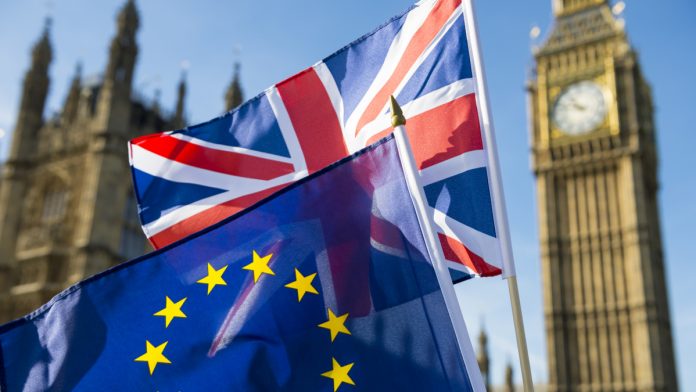The pound advanced throughout Wednesday’s session, jumping sharply higher in the last few hours as the UK stepped back from the brink of a no deal Brexit. The pound euro exchange rate closed 0.7% higher at €1.1098. The pair is advancing in early trade on Thursday.
| What do these figures mean? |
| When measuring the value of a pair of currencies, one set equals 1 unit and the other shows the current equivalent. As the market moves, the amount will vary from minute to minute.
For example, it could be written: 1 GBP = 1.13990 EUR Here, £1 is equivalent to approximately €1.14. This specifically measures the pound’s worth against the euro. If the euro amount increases in this pairing, it’s positive for the pound . Or, if you were looking at it the other way around: 1 EUR = 0.87271 GBP In this example, €1 is equivalent to approximately £0.87. This measures the euro’s worth versus the British pound. If the sterling number gets larger, it’s good news for the euro. |
The pound rallied across the previous session after Prime Minister Boris Johnson experienced a humiliating double defeat, reducing the probability of a disorderly Brexit. MP’s voted 327 to 299 in favour of backing legislation to prevent a no deal Brexit. This will now be debated by the House of Lords before potentially becoming law next week. Boris Johnson could be forced to go to the EU to request a further extension to Brexit until 31st January.
The second defeat came from as MP’s blocked the Boris Johnson’s attempts to call a snap general election. The Prime Minister failed to get the backing of two-thirds of Parliament which is needed to proceed with an election. Political analysts expect that MP’s will back Boris Johnson’s call for an election next week once the anti no deal Brexit bill has been made into law. Usually this level of political instability would weigh heavily on a currency. However, in this case the pound is advancing as investors reassess the probability of a hard, no deal Brexit.
| Why is a “soft” Brexit better for sterling than a “hard” Brexit? |
| A soft Brexit implies anything less than UK’s complete withdrawal from the EU. For example, it could mean the UK retains some form of membership to the European Union single market in exchange for some free movement of people, i.e. immigration. This is considered more positive than a “hard” Brexit, which is a full severance from the EU. The reason “soft” is considered more pound-friendly is because the economic impact would be lower. If there is less negative impact on the economy, foreign investors will continue to invest in the UK. As investment requires local currency, this increased demand for the pound then boosts its value. |
Will German Factory Data Pull Euro Lower?
The euro moved lower versus the pound in the previous session. The common currency was under pressure versus sterling as investors reacted to the new European Central Bank President Christine Lagarde’s pledge to follow on with Draghi’s accommodative stance. She promised to respond with agility to the looming financial and economic turmoil when she becomes President in November. In short Christine Lagarde pledged to continue lose monetary policy for a long period of time. The prospect of lower rate for longer weighed on the value of the euro.
| Why do interest rate cuts drag on a currency’s value? |
| Interest rates are key to understanding exchange rate movements. Those who have large sums of money to invest want the highest return on their investments. Lower interest rate environments tend to offer lower yields. So, if the interest rate or at least the interest rate expectation of a country is relatively lower compared to another, then foreign investors look to pull their capital out and invest elsewhere. Large corporations and investors sell out of local currency to invest elsewhere. More local currency is available as the demand of that currency declines, dragging the value lower. |
Today investors will switch their attention back to Germany for the release of German factory orders. Analysts are expecting the data to show that factory orders declined by -1.1% month on month in July as the exporter country continues to feel the impact of the ongoing US — Sino trade dispute. Given that data earlier in the week showed that German manufacturing sector remained deep in contraction a weak factory order reading would not be surprising. However, it would boost fears that Germany is heading towards a recession in the third quarter.
Currencylive.com is a site operated by TransferWise Inc. (“We”, “Us”), a Delaware Corporation.
The content on our site is provided for general information only. It is not intended to amount to advice on which you should rely. You must obtain professional or specialist advice before taking, or retain from, any action on the basis of the content on our site.
Although we make reasonable efforts to update the information on our site, we make no representations, warranties or guarantees, whether express or implied, that the content on our site is accurate, complete or up to date. Some of the content posted on this site has been commissioned by Us, but is the work of independent contractors. These contractors are not employees, workers, agents or partners of TransferWise and they do not hold themselves out as one. The information and content posted by these independent contractors have not been verified or approved by Us. The views expressed by these independent contractors on currencylive.com do not represent our views.





